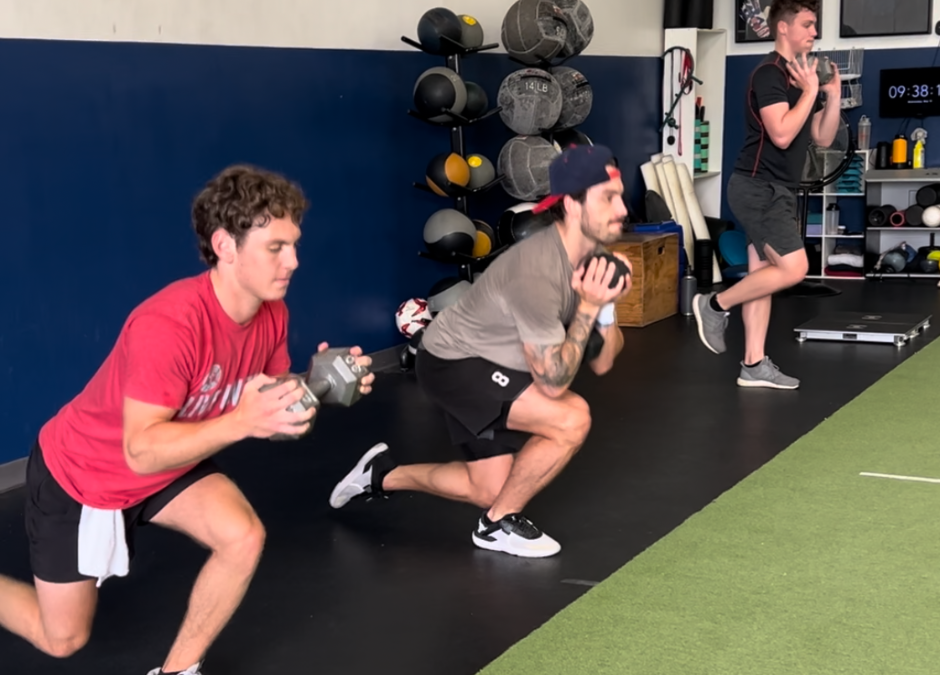With the Stanley Cup Finals underway, there’s no better time to discuss hockey players’ off-season training regimen. Hockey is a physically demanding sport, requiring extreme mobility, strength, power, stability, and stamina. During the off-season, we can increase our athletes’ physical capabilities in these aspects and work on any deficiencies they may have.
Mobility/Recovery Phase
At the start of the off-season, hockey players’ bodies are typically beaten up due to the wear and tear sustained during the season, especially during playoffs. This is our opportunity to rehabilitate any injuries sustained, as well as allow us to work on mobility to let the body recover and get ready for the more intense parts of the off-season. Mobility is crucial for hockey players. As humans, we haven’t quite yet evolved the anatomy that allows us to ice skate and take slapshots most efficiently. Therefore, by repeatedly doing so, hockey players develop limitations, specifically within the hips and shoulders. These restrictions can be improved during this time by increasing the player’s active range of motion and conditioning them to exhibit control through that entire range. This phase typically lasts 2-3 weeks, and towards the end, we begin to taper into our strength phase.
Strength Phase
For the strength phase, we want our players to develop the ability to be strong and resilient in the positions that they are in when on the ice. This means developing incredible amounts of full-body strength with a heavy focus on single-leg strength, rotational and anti-rotational core stability, and upper-body strength. These exercises allow the players to be strong on the puck, take hard shots, and let them go to work in the corners knowing that they are strong and dynamic enough to resist the forces of the other players. Lifts such as heavy squats and trap bar deadlifts are used to develop the necessary strength for powerful strides and big checks, while lifts such as single-leg skater squats and single-leg Romanian deadlifts allow the athlete to be dynamic and balanced. Of course, during this time we still work on mobility, but it is no longer the focus. The strength phase will typically last around a month before transitioning to power and anaerobic endurance.
Power Phase
To develop power, we take the strength that’s been developed and teach the body to use it quickly. This means doing exercises fast, such as medicine ball throws, jump variations, and speed work that encodes the nervous system to sustain forceful, repetitive contractions. This variety of training helps the athlete skate faster, take quick shots, and be a lethal weapon on the ice. During this phase, mobility and strength training are still being incorporated, but less than they were before. In that regard, exercises such as lateral lunges, Pallof presses, and kettlebell chops are chosen to emphasize functionality specific to hockey players.
Conditioning
Anaerobic cardio is honed in the final weeks of the off-season; workouts such as repeating bouts of 15–30 second max effort fan bike sprints and sprinting are utilized. By building the athletes’ anaerobic endurance, athletes will be prepared to perform for 60 minutes straight. At this point, the off-season is coming to a close and our hockey players are being sent off to their various combines, main camps, and teams. This periodized approach to hockey training allows our athletes to continuously improve by getting stronger, faster, and more dynamic every season so they can COMPETE at the highest level.

